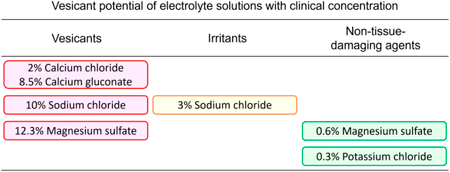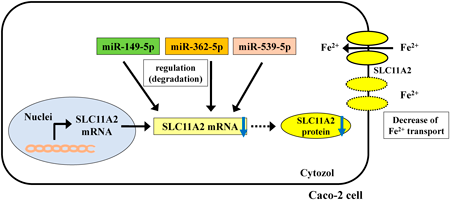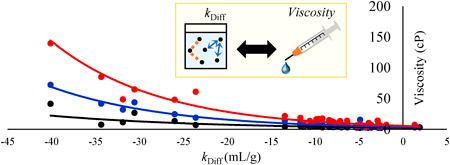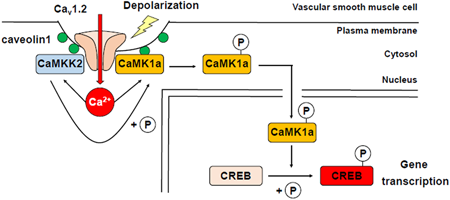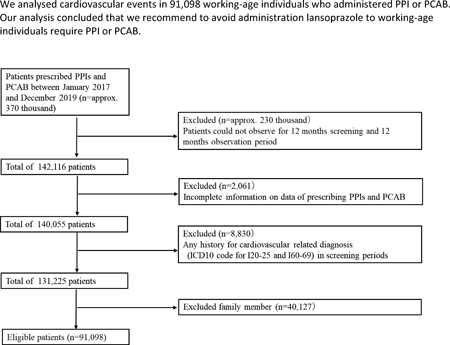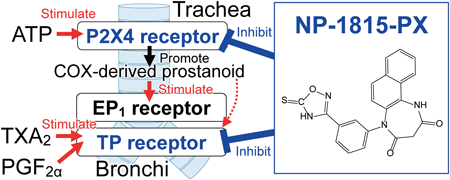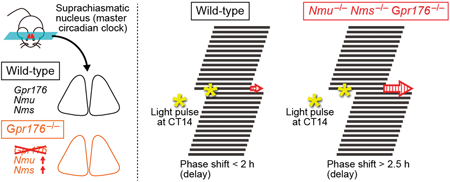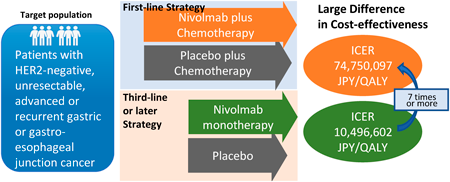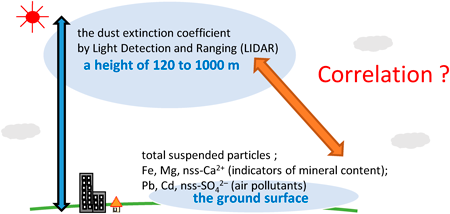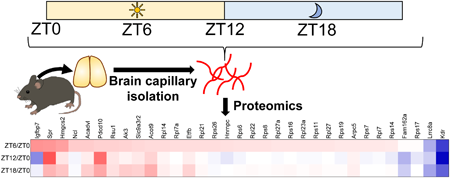-
Volume 45 (2022) Issue 10 Pages 1544-1552Esterases Involved in the Rapid Bioconversion of Esmolol after Intravenous Injection in Humans Read moreEditor's pick
Esmolol, an antedrug, is clinically used for long period due to its rapid onset of action and elimination at a rate greater than cardiac output. The authors found the esterases involved in the hydrolysis of esmolol. Esmolol was hydrolyzed by human carboxylesterase 1 (hCE1) in leukocytes and platelets. The human hepatic clearance limited by hepatic blood flow was obtained by microsomal hydrolysis by hCE1 and cytosolic hydrolysis by acyl protein thioesterase 1 (APT1). The expression of hCE1 and APT1 in human lung might cause the high total clearance of esmolol, which is 3.5-fold greater than cardiac output.
-
Volume 45 (2022) Issue 10 Pages 1559-1563Dihydroceramide Δ4-Desaturase 1 Is Not Involved in SARS-CoV-2 Infection Read moreEditor's pick
Hayashi Y, et al. have already reported that N-(4-Hydroxyphenyl)-retinamide (4-HPR) inhibits dihydroceramide Δ4-desaturase 1 (DEGS1) enzymatic activity, and suppresses SARS-CoV-2 infection. Here, the authors describe the generation of DEGS1 knockout VeroE6/TMPRSS2 cells and their use to evaluate the infectivity and the effect of 4-HPR on SARS-CoV-2 infection. This study reports that DEGS1 is not involved in SARS-CoV-2 infection, including viral replication and the release of viral progeny. Further investigation is needed to elucidate the exact mechanism underlying the inhibition in SARS-CoV-2 infection by 4-HPR. 4-HPR has been extensively studied for cancer treatment. Therefore, the results of this study, along with accumulated clinical data on the safety of 4-HPR, are potential candidates for the treatment of COVID-19.
-
Volume 45 (2022) Issue 10 Pages 1572-1580SNAP23-Mediated Perturbation of Cholesterol-Enriched Membrane Microdomain Promotes Extracellular Vesicle Production in Src-Activated Cancer Cells Read moreEditor's pick
Cancer cells secrete large numbers of small extracellular vesicles (sEVs). These vesicles are derived from intraluminal vesicles (ILVs) and contribute to cancer progression by forming the tumor microenvironment. In this study, Mitani et al. demonstrated a novel role for SNAP23 in Src-dependent EV secretion: in Src-transfected cells, SNAP23 translocates to non-rafts and causes cholesterol depletion, resulting in the upregulation of ILV. They also found that pancreatic cancer patients with high SNAP23 expression have a poor prognosis. These findings suggest that the Src-SNAP23-sEV axis contributes to cancer progression.
-
Volume 45 (2022) Issue 9 Pages 1254-1258Classification of Skin Injury Risk Caused by Extravasation of Electrolyte Solutions or Infusions in a Rat Model Read moreEditor's pick
Cytotoxic agents are classified according to the severity of skin injury after extravasation. However, injuries caused by extravasation of noncytotoxic agents have not been sufficiently investigated. In this study, the authors focused on noncytotoxic electrolyte solutions and infusions and evaluated skin injuries macroscopically and histopathologically using extravasation model rats. As a result, the electrolyte solutions and infusions were classified into three categories (vesicants, irritants, and non-tissue-damaging agents) depending on the degree of skin injury. The characteristic symptoms and severity of each drug extravasation revealed in this study will provide basic information for preparation of guidelines for treatment of extravasation.
-
Volume 45 (2022) Issue 9 Pages 1291-1299Regulation of Iron-Ion Transporter SLC11A2 by Three Identical miRNAs Read moreEditor's pick
MicroRNAs (miRNAs) are known “key regulator” of numerous gene expressions. In this study, authors determined the effects of three miRNAs, miR-149-5p, miR-362-5p, and miR-539-5p, on iron-ion transporter, SLC11A2 mRNA using the cultured human colon carcinoma cell line. Authors found that they regulate SLC11A2 gene expression and iron-ion transporting function in an in vitro system. Authors believe that this study makes a significant contribution to the literature because the use of these three miRNAs as surrogate biomarkers could significantly advance the development of therapies for the treatments of diseases caused by transporter disorders, such as anemia.
-
Volume 45 (2022) Issue 9 Pages 1300-1305Estimation of the Viscosity of an Antibody Solution from the Diffusion Interaction Parameter Read moreEditor's pick
In antibody drugs, estimating the viscosity at high concentrations is crucial in terms of designing drug formulations since high viscosity could limit the choice of administration routes. The authors hypothesized that the diffusion interaction coefficient may be a key factor in estimating the viscosity and analyzed the relation between them. Not only have the results showed the viscosity can be estimated by using the diffusion interaction coefficient, but it has also succeeded in setting criterions for the feasibility of high concentration formulations. Such findings will deepen the understanding of the physicochemical properties, leading to the promotion of future drug development.
-
Volume 45 (2022) Issue 9 Pages 1354-1363Local Ca2+ Signals within Caveolae Cause Nuclear Translocation of CaMK1α in Mouse Vascular Smooth Muscle Cells Read moreEditor's pick
An increase in intracellular Ca2+ concentration activates Ca2+-sensitive enzymes such as Ca2+/calmodulin-dependent kinases (CaMK) and induces gene transcription in various types of cells through excitation-transcription (E-T) coupling. In this study, the authors revealed that CaMK1α can be fully activated by both Ca2+ influx through of L-type Ca2+ channels, Cav1.2, and phosphorylation by CaMKK2 within caveolae in mouse vascular smooth muscle cells. This activated (phosphorylated) CaMK1a can translocate from the cytosol to the nucleus. These findings strongly suggest that CaMK1a can transduce Ca2+ signaling generated within or very near caveolae to the nucleus and thus, promote E-T coupling.
-
Editor's pick
Proton pump inhibitors (PPIs) or potassium-competitive acid blocker (PCAB) are widely used in Japan. PPIs or PCAB is known to have cardiovascular risk. Authors revealed the cardiovascular risk in each PPI or PCAB components using a large claims data in 91,098 working-age workers. Finally, authors reveal that lansoprazole, a higher CYP2C19 inhibition activity as compared other PPIs or PCAB, is a higher risk for cardiovascular risk.
-
Volume 45 (2022) Issue 8 Pages 1124-1132Autism Spectrum Disorder Model Mice Induced by Prenatal Exposure to Valproic Acid Exhibit Enhanced Empathy-Like Behavior via Oxytocinergic Signaling Read moreEditor's pick
ASD are neurodevelopmental disorders characterized by impairments in social behavior and repetitive interests. Individuals with ASD often also display decreased empathy, while recent report indicates that individuals with ASD show enhanced emotional empathy than typically developed individuals. In this study, Takayama et al. assessed socially transmitted fear in observational fear learning paradigm as a proxy of emotional empathy in VPA-treated mice, ASD model mice. The authors found that hyperactivity of oxytocin neurons in the paraventricular nucleus of hypothalamus in VPA-treated mice enhanced empathy-like behaviors in observational fear learning paradigm.
-
Volume 45 (2022) Issue 8 Pages 1158-1165Effects of NP-1815-PX, a P2X4 Receptor Antagonist, on Contractions in Guinea Pig Tracheal and Bronchial Smooth Muscles Read more
-
Volume 45 (2022) Issue 8 Pages 1172-1179Nmu/Nms/Gpr176 Triple-Deficient Mice Show Enhanced Light-Resetting of Circadian Locomotor Activity Read moreEditor's pick
Circadian clock disruption has been linked to diseases ranging from metabolic syndrome to cancer. Therefore, the circadian system has become an attractive target for research and clinical care innovations. The authors show that the orphan G-protein-coupled receptor Gpr176 is involved in light entrainment of the circadian clock through a mechanism requiring two related neuropeptides, neuromedin U and neuromedin S. It is suggested by the authors that simultaneous modulation of these neuropeptides and Gpr176 may constitute a potential therapeutic option for modulating the circadian clock.
-
Volume 45 (2022) Issue 7 Pages 806-812Health Effects and Safety Assurance of Nanoparticles in Vulnerable Generations Read moreEditor's pick
Despite the usefulness of nanoparticles, there are now safety concerns about their use. Therefore, the importance of evaluating the safety of vulnerable generations such as pregnant women and infants, who are highly sensitive to chemical substances, has been pointed out worldwide. From this perspective, to analyze the risk from nanoparticles to vulnerable generations, nano-safety science and nano-safety design research has been conducted. The findings of these studies will lead not only to develop a nanotechnology that will enable the sustainable use of nanoparticles; they will also contribute to future developments in the field of health science.
-
Editor's pick
Recently, therapeutic drug monitoring is recommended for many drugs even though the procedure is not covered by health insurance. This Current Topic focuses on four areas: (1) anticancer drugs, (2) anti-infective agents, (3) antipsychotics/antidepressants, and (4) antibody drugs. Among the drugs that are not approved for insurance coverage in Japan, the drugs for which TDM is recommended and drugs that are likely to be approved in the future are summarized in a review, which include their pharmacokinetic characteristics and the usefulness of TDM.
-
Volume 45 (2022) Issue 7 Pages 851-855More than 370-Fold Increase in Antibody Affinity to Estradiol-17β by Exploring Substitutions in the VH-CDR3 Read moreEditor's pick
Antibodies that specifically target biomarkers are essential in clinical diagnosis. Genetic engineering has assisted in designing novel antibodies that offer greater antigen-binding affinities, thus providing more sensitive immunoassays. Authors have succeeded in generating a single-chain Fv fragment (scFv) targeted estradiol-17b (E2) with more than 370-fold improved affinity (Ka 3.2 ´ 1010 M-1), based on a strategy focusing the complementarity-determining region 3 in the VH domain (VH-CDR3). This improvement is the greatest reported for mutagenesis targeting anti-steroid antibodies. The scFv mutant enabled an enzyme-linked immunosorbent assay that provided sensitive dose-response curves for determining E2, the midpoint of which was 4.46 pg/assay.
-
Volume 45 (2022) Issue 7 Pages 881-887Hospital-Wide Surveillance of Fracture Risk Assessment by Both FRAX and Medication Patterns in Acute Care Hospital Read moreEditor's pick
Fracture Risk Assessment Tool (FRAX) is a well-known scoring system for predicting the probability of fragility fractures (FF). However, among the factors used in FRAX, glucocorticoid is the only medication factor. Authors assessed the risk of FF at each clinical department using FRAX and medication patterns. As a result, the departments included in the high-risk group by FRAX were not necessarily the same as the departments included in the top group, based on the administered medications. Authors recommend the use of FRAX together with prescribed medications on hospital-wide surveillance of fracture risk assessment.
-
Editor's pick
For the patient, the national health insurance of Japan is a wonderful system which can be proud to the world. Efficiency of medical care is an important issue to make this system sustainable into the future. Nivolumab, a breakthrough cancer drug, is widely effective, but its high price raises efficiency concerns. Authors performed model-based cost-effectiveness analyses in first-line and late-line treatment for advanced gastric cancer. The first-line treatment had an incremental cost-effectiveness ratio of more than 7 times that of the late-line treatment. Authors showed challenges between economics and best practices in healthcare.
-
Volume 45 (2022) Issue 6 Pages 703-708Effects of Concomitant Administration of PXR Ligand Drugs on the Anticoagulant Effects of Warfarin Read moreEditor's pick
Changes in drug-metabolizing activity via pregnane X receptor (PXR) is one of the mechanisms involved in drug-drug interactions. The authors reported cases in which the anticoagulant effects of warfarin were reversibly attenuated by the concomitant administration of rifampicin or bosentan, which are potent PXR ligands. However, no recovery of the response to warfarin was observed in the patients switched from bosentan to macitentan, which is considered not to activate PXR in clinical settings. The authors describe the importance of long-term monitoring and additional examinations to clarify the sustained mechanism for the drug interaction with warfarin, when switching from bosentan to macitentan.
-
Volume 45 (2022) Issue 6 Pages 709-719Comparison of the Concentration of Suspended Particles and Their Chemical Composition near the Ground Surface and Dust Extinction Coefficient by LIDAR Read moreEditor's pick
The dust extinction coefficient measured by light detection and ranging (LIDAR) has been used as an indicator of exposure to Asian dust in many epidemiological studies; however, few reports exist which explore the relationship between the dust extinction coefficient and the distribution of airborne particles near the ground surface. In this study, authors repot that the dust extinction coefficient is a useful indicator of Asian dust near the ground surface; however, as harmful air pollutants occasionally move with Asian dust, it is necessary to monitor these pollutants near the ground surface when conducting an epidemiological study on the health effect of airborne particles.
-
Volume 45 (2022) Issue 6 Pages 751-756Diurnal Changes in Protein Expression at the Blood–Brain Barrier in Mice Read moreEditor's pick
Circadian rhythms influence various physiological functions, including drug distribution and efficacy. However, the influence of circadian rhythms on the blood-brain barrier (BBB) remains unclear. Ogata et al. comprehensively investigated diurnal protein changes in mouse BBB by quantitative proteomics analysis. Expression of proteins associated with transport and physical barrier at the BBB remained constant throughout the day, whereas expression of proteins involved in protein synthesis, angiogenesis, and energy metabolism varied diurnally. These findings may help predict the biological responses to circadian changes in the BBB and brain drug distribution.
-
Editor's pick
An administration plan for vancomycin in bedridden elderly patients has not been established. This study evaluated the prediction accuracy of the Bayesian-derived area under the concentration-time curve (AUC) of vancomycin using creatinine-based equations for estimating kidney function in such patients. In this paper, the authors showed that the Bayesian approach using the estimated creatinine clearance calculated by substituting the serum creatinine level + 0.2 into the Cockcroft-Gault equation has the highest prediction accuracy for the AUC in bedridden elderly patients. These results may contribute to improving the efficacy and safety of vancomycin in such patients.



